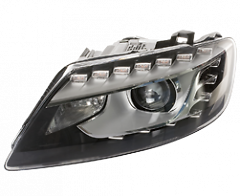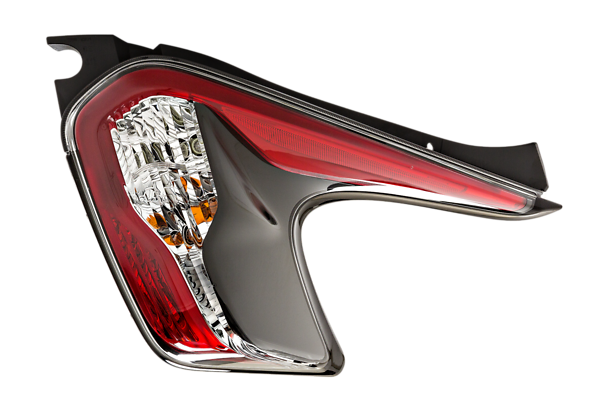Headlamps

Different Light sources for Headlamps
Halogen Headlamps
Valeo provides more than 1000 references of Halogen Headlamps for the aftermarket. Automotive Halogen bulbs are the most used light sources for headlamps, representing more than 80% of the car park. The Halogen technology was first developed by Cibié (Valeo-owned brand) in the 1950’s and continuously improving since then, with, for example, the development of more complex reflectors (elliptical modules) that allow the use of transparent lenses (as opposition to striped lenses) and new design possibilities.
Xenon Headlamps
Valeo has launched the first Xenon Headlamps in 1996. Xenon bulbs are part of the High-Intensity Discharge (HID) lamps that produces light thanks to an electric arc generated between two electrodes. Xenon headlamps offer an increased visibility by more than 30% compared to halogen headlamps at a longer range (110m vs. 80m). Xenon headlamps also offer a light closer to daylight illumination, i.e. a whiter or blue-ish light for lower power consumption (35W vs. 55W for H1 bulb) that allows significant CO2 emissions by 1.3g/km.
L.E.D. Headlamps
Light Emitting Diodes (L.E.D.s) provide a very efficient light for less power consumption than halogen and xenon bulbs with extended design possibilities thanks to their compact size. First used in rearlamps for their new design capabilities, L.E.D.s are now used in headlamps mostly on high-end car finishes. Besides offering the same optical performance level as Xenon headlamps, L.E.D.s have a lower power consumption and last entire car lifetime. Valeo has launched full-L.E.D. headlamps for the new Ford Mondeo, the Seat Leon and The Volkswagen Golf VII applications.
Several technologies for Headlamps
AFS
In combination with the different light sources, Valeo has developed different technologies improving driver’s visibility in response to the Adaptative Front Lighting System (AFS) regulations set in the early 2000’s.
FBL/Cornering/DBL
Fixed Bending Light (FBL) and Cornering systems consist of additional reflecting surfaces or elliptical modules in the headlamps or the foglamps dedicated to corner visibility. The additional light source is switched on when the driver turns the steering wheel or activates the turn indicator. The first FBL headlamp launched by Valeo was an application for the 2003 Porsche Cayenne. With the Dynamic Bending Light technology, there is no additional light: the elliptical module can rotate of 15° towards outside and 8° toward the inside when the driver turns the steering wheel for a maximum visibility in corners.
Full AFS: Intelligent Adaptative Lighting Systems
The Xenon or L.E.D. module can swivel in every direction and adapt the light beam according to the vehicle speed and the weather conditions to improve driver’s comfort and safety. The standard low beam automatically changes to “Motorway beam” at a speed around 110 km/h to increase the visibility up to 120 meters. Other full AFS options include “Adverse weather beam” that concentrate lighting on certain areas of vision to reduce glare due to reflections from wet surfaces or fog. Lastly, the “Tourism mode” reverses the lighting of right-hand-drive vehicles for driving in countries where one drives on the right side of the road, and vice versa.
ADB/Beamatic
Valeo has developed a Adaptative Driving Beam (ADB) system that uses a camera to detect the presence of other vehicles. The headlamps remain in the main beam position and progressively lower the beam as an oncoming vehicle approaches, to avoid glare. The function also takes into account the rear lamps of vehicles driving in the same lane. In an even more innovative development, the camera and position captors will detect the road’s gradient and adapt the beam height accordingly. Those functions are grouped together under the name BEAMATIC™.






